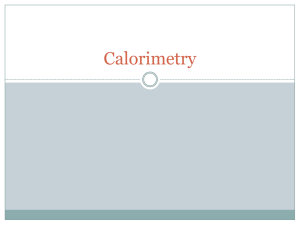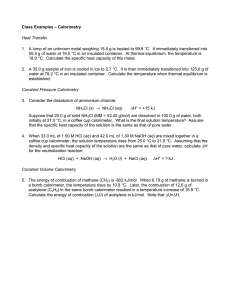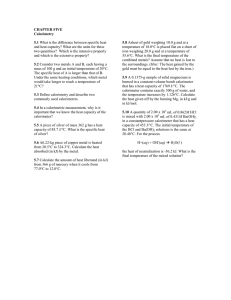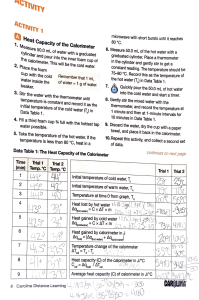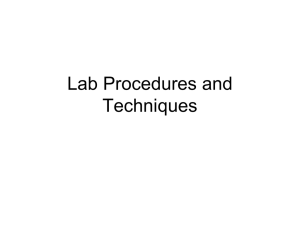SCH4U1 Transfer of Energy
advertisement
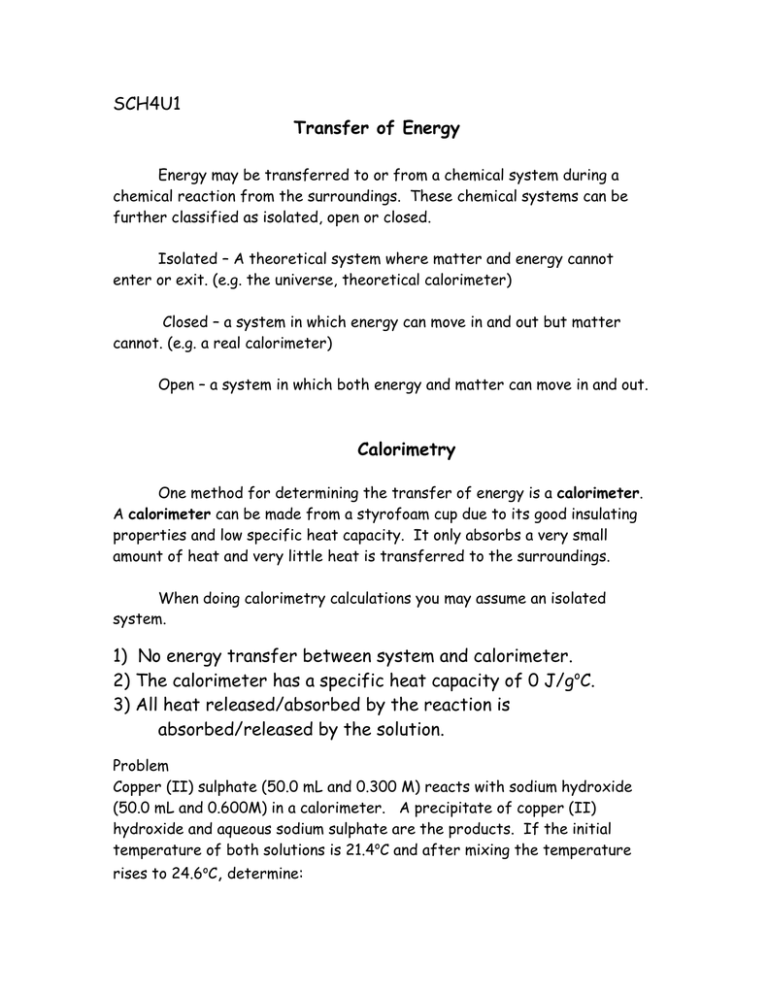
SCH4U1 Transfer of Energy Energy may be transferred to or from a chemical system during a chemical reaction from the surroundings. These chemical systems can be further classified as isolated, open or closed. Isolated – A theoretical system where matter and energy cannot enter or exit. (e.g. the universe, theoretical calorimeter) Closed – a system in which energy can move in and out but matter cannot. (e.g. a real calorimeter) Open – a system in which both energy and matter can move in and out. Calorimetry One method for determining the transfer of energy is a calorimeter. A calorimeter can be made from a styrofoam cup due to its good insulating properties and low specific heat capacity. It only absorbs a very small amount of heat and very little heat is transferred to the surroundings. When doing calorimetry calculations you may assume an isolated system. 1) No energy transfer between system and calorimeter. 2) The calorimeter has a specific heat capacity of 0 J/goC. 3) All heat released/absorbed by the reaction is absorbed/released by the solution. Problem Copper (II) sulphate (50.0 mL and 0.300 M) reacts with sodium hydroxide (50.0 mL and 0.600M) in a calorimeter. A precipitate of copper (II) hydroxide and aqueous sodium sulphate are the products. If the initial temperature of both solutions is 21.4oC and after mixing the temperature rises to 24.6oC, determine: a) the balanced chemical equation b) the enthalpy change of the reaction c) the enthalpy change per mol of CuSO4 Solution a) _____(aq) + _______(aq) → _______(s) + _______(aq) b) total volume = ____ mL + ____ mL = ________ mL (assume density of 1.00 g/mL) m = 100 g ΔH = m c ΔT ΔH = ( J/goC) ( )( o C) ΔH = ___x 103 J ( 1 kJ___) 1000 J ΔH = _____ kJ (gained by the water) ΔH = _____ kJ (lost by the system) c) calculate the number of moles of CuSO4 n = (______mol)( L n = _________ mol molar enthalpy change mL)( 1L ) 1000mL ΔH = kJ____ mol ΔH = __________ kJ/mol



